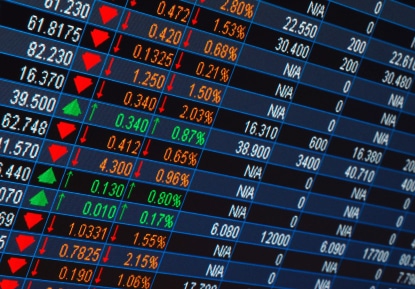
Peter Szopo, Erste Asset Management
In the past two days, the stock exchanges, spearheaded by the New York Stock Exchange, have shed the entire previous gains of 2018. Even last week, inflation worries had started to weigh on the markets. But the recent reaction was extraordinarily strong, with experts likening it to the excellent employment report in the US.
We have asked Peter Szopo, our equity strategist, about the current market situation.
1. Some market participants have called this situation at the New York Stock Exchange a “flash crash”. What were the reasons?
The stock exchanges had been rising at an unprecedented pace in January. US indices rose 7-8% over the first four weeks, as did emerging markets. At the beginning of the year, growth was already achieved, some of which had been expected for the year as a whole. The background was continued robust economic data, the expected impetus of the US tax reform and the prospect of further increases in corporate profits.
Overall, there were signals that suggested that something was looming on the horizon. The market participants became increasingly uncertain with regard to the inflation outlook. The job report in the USA further fuelled these worries. Wage increases exceeded expectations, which made many investors nervous about how restrictive the US Fed would turn this year. Investors now expect four interest hikes, markets previously anticipated only three.
The high valuations and bond yields – 10-year US yields have risen more than 40 basis points* since the beginning of the year – then caused some investors to take profits.
In phases, where markets increased continuously with low volatility, the correction sometimes is severe. Market participants were indulged by the long phase of low volatility. Furthermore, computer-aided algorithms may have fuelled the market turbulences. Either way, volatility has increased enormously.
* 100 Basis points = 1%
2. What about the fundamental data?
The fundamentals of the global economy are still excellent. For example, in January the IMF revised its estimate of the growth rate of global real GDP for 2018 up to 3.9%. The Eurozone is growing at rates we last saw in 2006.
After a few years of disappointing earnings growth, companies finally reported convincing results in 2017. In contrast to previous years, analysts increased their earnings estimates over the year. In addition, the tax reform will come with a positive impact on US companies.
3. Is this just a short-lived correction, or do we have to brace ourselves for a new situation?
The combination of low-inflation growth and ultra-low interest rates that fueled the stock markets in the previous year and early this year is coming to an end. The macroeconomic and economic policy environment is moving towards normalization, as my colleague Gerhard Winzer – the house’s economic expert – has pointed out for weeks. I believe markets’ reaction to this regime change is exaggerated and we will see support for equities as the year progresses.
At the moment, however, the stock markets are certainly in a “risk-off mode”, in which investors tend to be defensive. How strong and how long the correction phase will turn out can’t be predicted. Even if the price decline comes to an end soon – which is actually my scenario – it will take some time before the old highs are reached again. A quick rebound is unlikely to be expected, as the setback was too strong and turbulent, but that this correction is already the beginning of a longer-term bear market is unlikely.
Legal note:
Prognoses are no reliable indicator for future performance.


